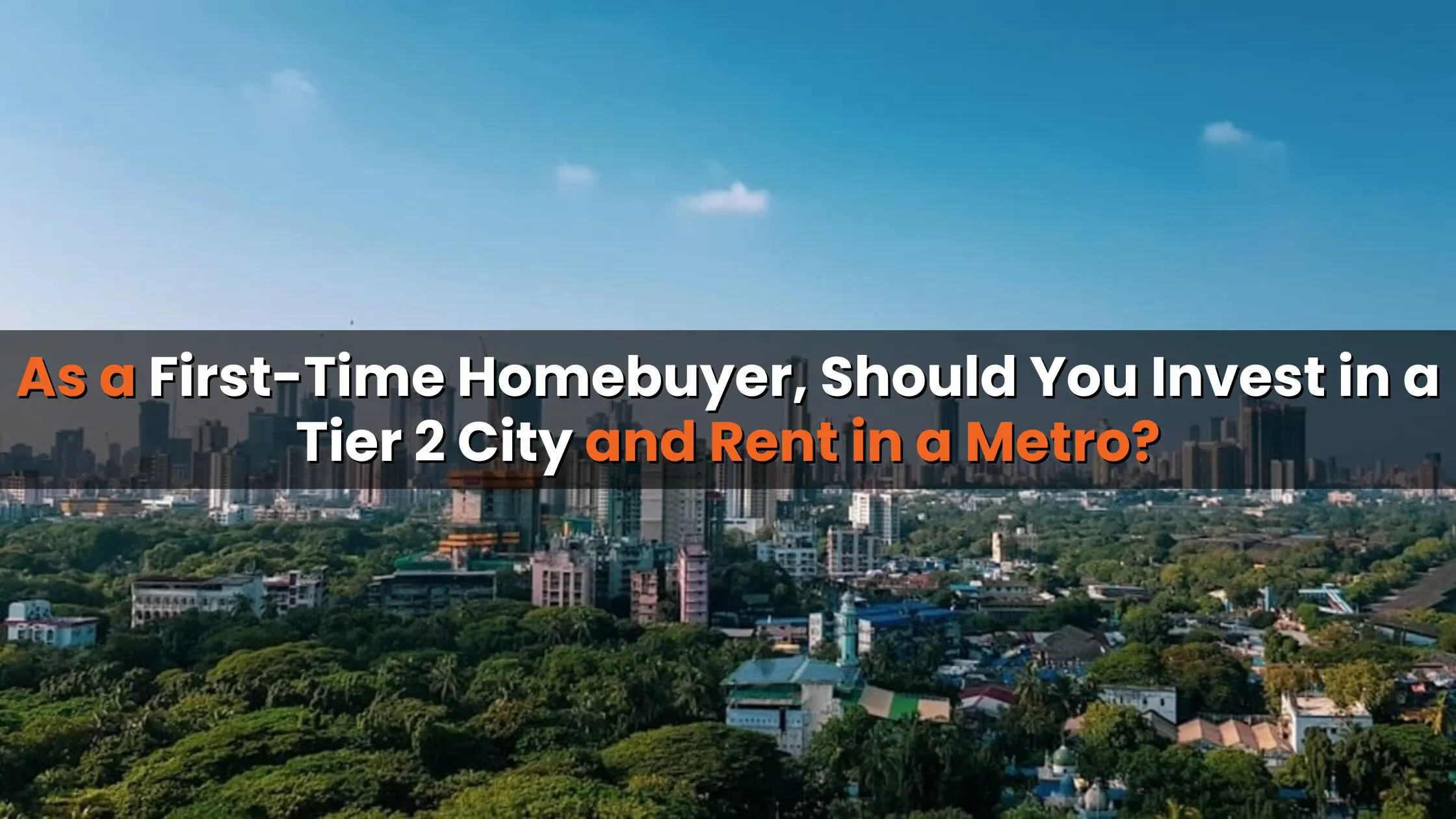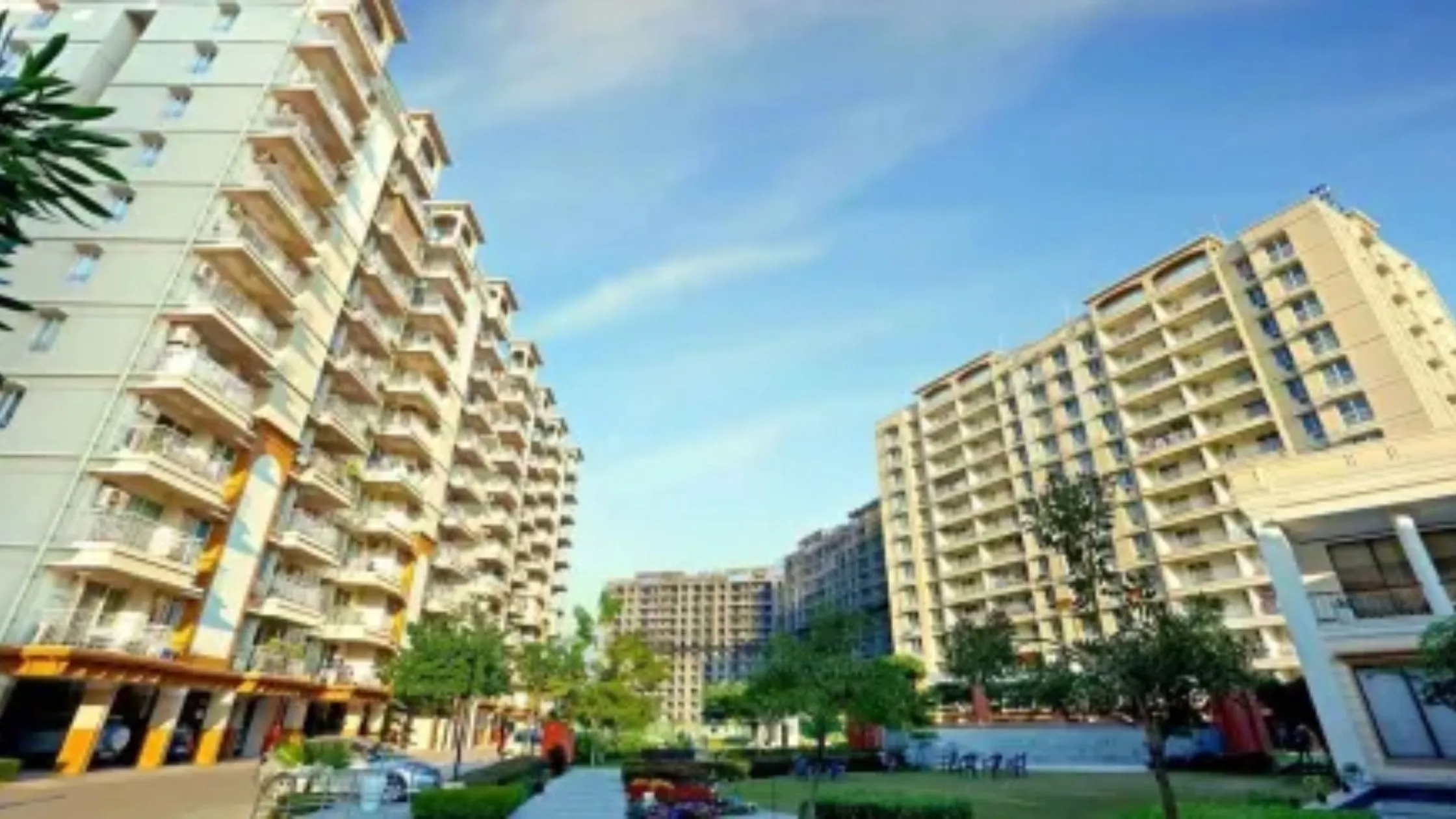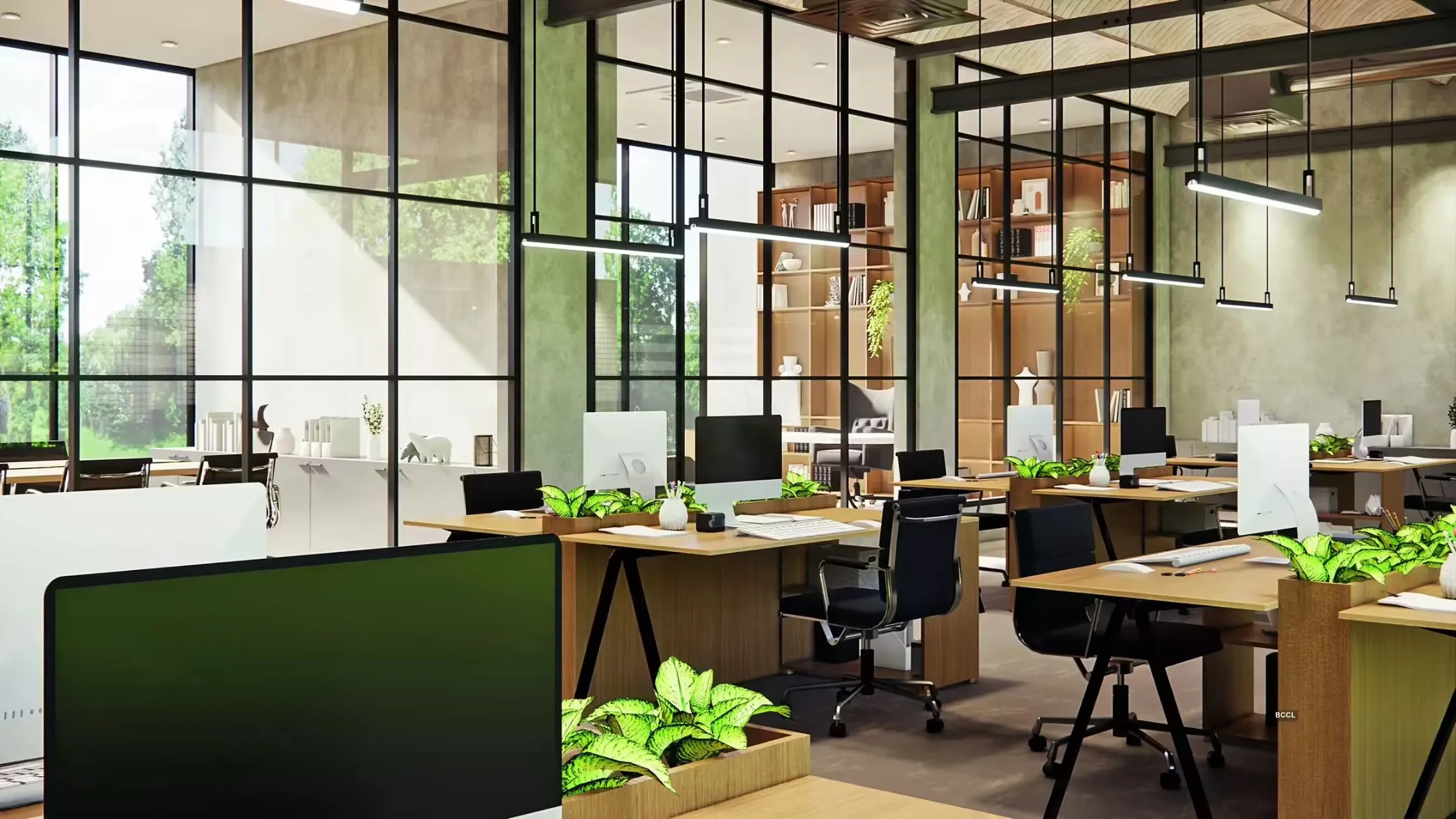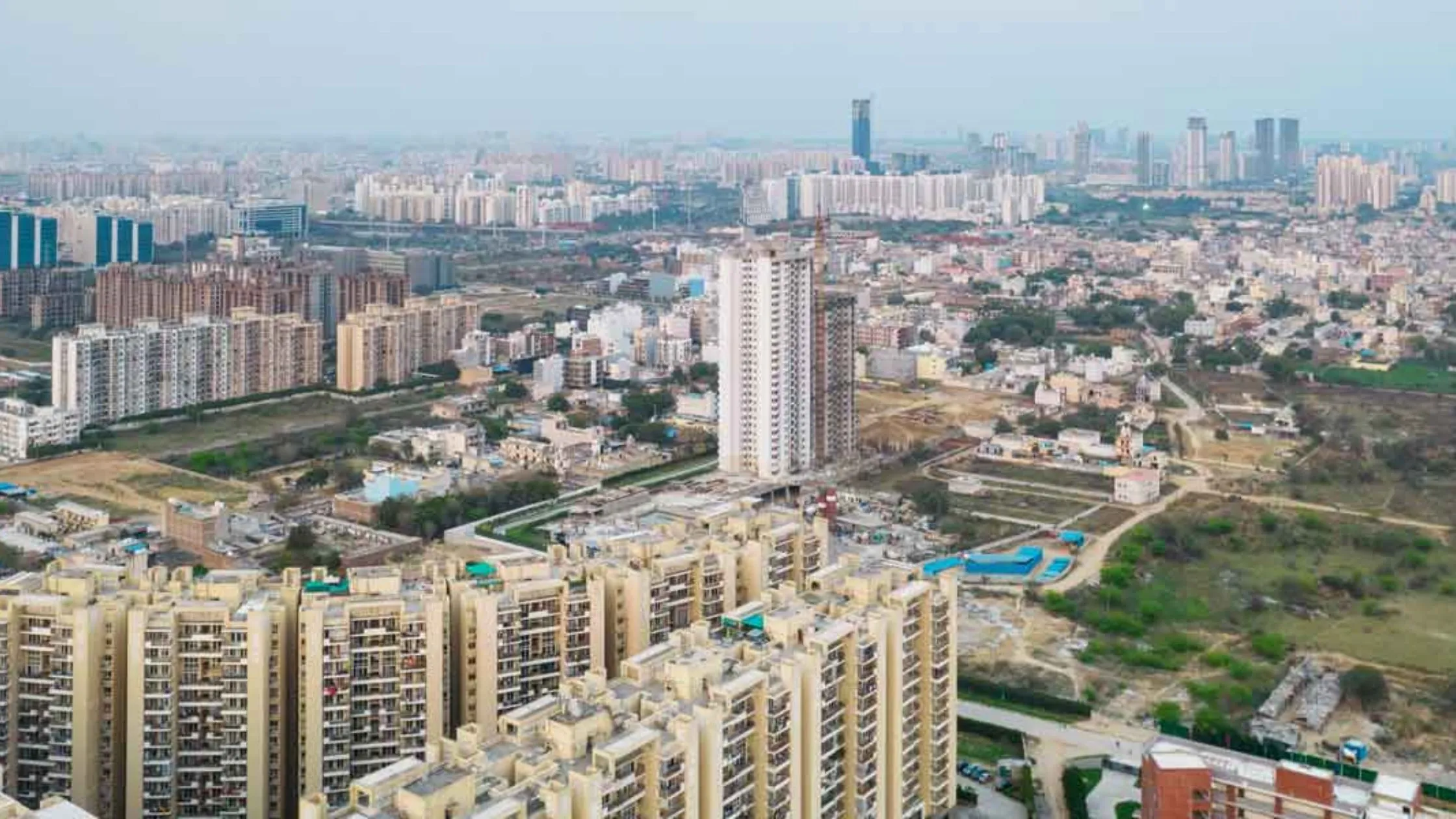Table of Content
Owning a home is a milestone that many of us dream of achieving. But for a first-time homebuyer living in a metro city, skyrocketing property prices often make this goal seem out of reach. With stagnant salaries and inflated real estate costs, the idea of buying a house where you live may not always be financially wise.
So here’s a growing strategy among millennials and young professionals rent in the metro, but buy in a Tier 2 city. It’s a hybrid approach that allows you to live close to your workplace and invest where real estate is still affordable and promising. But is this the right move for you?
Let’s break it down.
Metro Cities: Attractive but Increasingly Unaffordable
There’s no denying the advantages of living in cities like Mumbai, Delhi, or Bengaluru: better jobs, infrastructure, and amenities. But these perks come at a steep price.
For example, with an annual salary of ₹24 lakh, buying a 2BHK in a decent Mumbai suburb is still a stretch. Limited inventory, rising construction costs, and premium pricing have made metros a challenge for first-time homebuyers. Even with a healthy credit score, banks are cautious about lending large amounts unless you have significant savings or family support.
As a result, many young earners are turning to renting as a practical choice in metros while considering ownership options elsewhere.
Also Read: Under-construction premium homes see up to 44% YoY increase in prices in H1 2025
Why Tier 2 Cities Appeal to First-Time Homebuyers
If you’re earning decently but can’t afford to buy in your city, investing in a Tier 2 city might be a more strategic move. Here’s why:
- Affordability: You can own a 2BHK flat for ₹40–₹60 lakh in cities like Indore, Jaipur, or Nagpur. The per sq. ft. rate is often 50–70% lower than in metros.
- Lower Financial Risk: Home loans are easier to manage. With property rates between ₹3,500–₹6,500 per sq. ft., your EMI burden stays well within your monthly cash flow.
- More Space for the Same Budget: A budget that gets you a cramped 1BHK in a metro might fetch a spacious 2 or even 3BHK in a Tier 2 city.
- Better Loan Eligibility: Banks are more likely to approve loans for properties that cost less and carry lower risk.
For a first-time homebuyer, this strategy offers a manageable entry into real estate without compromising daily living standards.
Top Tier 2 Cities to Consider
Here are some emerging Tier 2 cities that combine livability, infrastructure push, and future value:
- Nagpur: A smart city with major infra developments and a central location.
- Mysuru: Offers proximity to Bengaluru with a better quality of life and lower costs.
- Greater Noida: Strategically located near Delhi NCR with strong connectivity and ongoing development.
- Indore and Surat consistently rank high on cleanliness and infrastructure improvements.
All of these cities offer a blend of affordability and appreciation potential ideal for a first-time homebuyer looking at long-term gains.
How to Plan Your Finances Smartly
Let’s say you earn ₹24 lakh annually. You can comfortably target a home loan EMI of ₹60,000–₹80,000 if you don’t have other major liabilities.
- Down Payment: Save for at least 20–25% of the property value to reduce EMI burden.
- Prepayment Plan: Try to prepay 5–7% of the loan every year. It significantly cuts down your interest and loan tenure.
- Avoid Over-Leverage: Just because you’re eligible for a ₹1 crore loan doesn’t mean you should take it. Start small and build equity.
Many first-time homebuyers also invest EMI savings into mutual funds or SIPs to grow wealth in parallel.
Long-Term Benefits of Investing in Tier 2 Cities
Buying a home in a Tier 2 city is not just a short-term affordability solution it can be a strong long-term wealth-building strategy.
- Capital Appreciation: As infrastructure improves, land and property values rise.
- Rental Potential: While the yields are modest, you can still earn a steady secondary income.
- Lower Cost of Ownership: Maintenance, taxes, and utility charges are far more reasonable compared to metro cities.
This strategy creates a financial cushion while maintaining your metro lifestyle.
Challenges You Should Be Aware Of
No investment comes without its share of risks. Here are a few challenges you should factor in:
- Limited Rental Demand: In some Tier 2 cities, rental demand is slow, so monetizing your property might take time.
- Longer Holding Period: Appreciation in smaller towns is slower and often depends on infrastructure rollout timelines.
- Lower Liquidity: It might not be easy to sell quickly, especially in less developed localities.
But for a first-time homebuyer with a long-term view, these are manageable risks.
Also Read: Godrej Properties Enters Raipur Market with 50-Acre Plotted Development Near Old Dhamtari Road
Conclusion
For urban professionals, owning a home in your city may not be feasible just yet. But that doesn’t mean you have to sit out of the real estate game.
If you’re a first-time homebuyer, consider the rent-vs-buy strategy. Rent where your career needs you to be, and invest in a Tier 2 city where your money works harder. It’s a financially sound, emotionally satisfying, and strategically smart move.
You get the best of both worlds: freedom today and security tomorrow.
Follow AquireAcers Whatsapp Channel to Stay Updated With The Latest Real Estate News








Ans 1. Yes, it allows you to live close to work while investing in affordable real estate for long-term returns.
Ans 2. They offer lower prices, better loan eligibility, and higher space for the same budget, making ownership more accessible.
Ans 3. Slower price appreciation, lower rental demand, and longer resale timelines compared to metros.
Ans 4. Yes, banks often prefer funding lower-risk, affordable properties, making approvals easier.
Ans 5. Nagpur, Indore, Mysuru, Greater Noida, and Surat show strong growth potential due to infrastructure and livability.
Ans 6. Aim for a 20–25% down payment and keep your EMI within 30–35% of your monthly income.
Ans 7. Yes, though rental income may be modest depending on the city’s demand.
Ans 8. Absolutely. With the right location and holding period, Tier 2 property can appreciate well over time.